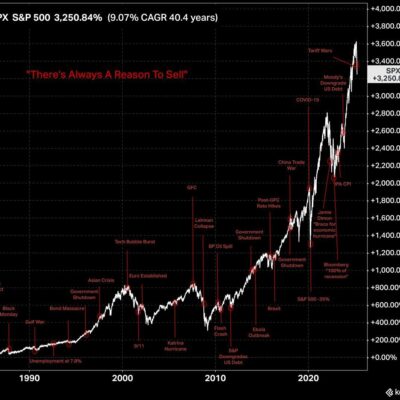
Isn't It Ironic, Don't You Think?
While the February 2022 decision to sanction Russia, expropriate their excess FX reserves and remove them from SWIFT post the invasion of Ukraine will be seen as a major spark that accelerated the decline of the UST as the world’s hegemonic neutral reserve asset, I think that we may look back to the August 2023 BRICS meeting and the inclusion of oil producers Saudi, UAE and Iran into the group as the straw that broke the camel’s back.
Most market participants and political prognosticators mistakenly saw this meeting as a failure to deliver an alternative BRICS currency but in reality, what it did was re-introduce gold as a neutral settlement asset allowing countries to trade goods in local currencies and settle any excesse trade balances in gold. This is exactly what BRICS wanted. Finally, a plan to displace US$ and UST hegemony has been put into motion and is being embraced by a larger segment of the global population.
Immediately after this meeting, we saw what looks in hindsight like it could have been an engineered attack on the UST market where a strong move higher in crude oil prices (coordinated by new BRICs members?) forced foreign UST holders to sell down their USTs in order to raise US$ necessary to pay up for more expensive energy. Term premiums rose for USTs, equity prices cratered and the UST market sold off materially on what were relatively minor drops in the foreign holdings of USTs according to TIC data while US 10 year yields increased from around 4.2% on September 1st, 2023 to 5.01% in late October. This significant rise in yields over a short two month period seemed to scare the crap out of the Fed and Administration.
As bonds were selling off and the market was growing increasingly concerned about ever increase US government deficits that would not be financed by price insensitive foreign buyers, it seems as though Yellen and Powell went to the October IMF meetings in DC to discuss with allies a plan to allow them to slow down the UST selling. These discussions then gave them the ability to engineer their dual policy pivot on November 1st.
Yellen surprised markets by announcing less UST duration selling than the market was expecting while Powell basically removed the final rate hike expected by the Fed in 4q23.
This coordinated plan led to a drastic loosening of financial conditions that brought yields lower and removed the pressure on the bond market to give the US time to figure out a longer term way to slow down foreign UST selling. 10 year yields fell from 5% to 3.8% by the end of 2023 and risk assets recovered mightily.
How was this done? Enter the non-USD buying of oil.
I believe that by blessing the ability of our allies (specifically Japan) to buy energy in currencies other than US$ (China and India already are doing this), this would slow down the need for them to sell their UST holdings to get the US$ necessary for them to buy oil.
It has now become in the US government’s strategic interest to want our allies (and other UST holders) to buy oil in local currency to provide them the incentive not to rapidly sell down their UST holdings when they need US$. The US recognizes that it needs time to find new buyers of its growing deficit (ultimately will regulate domestic banks to buy more and then the Fed again) so slowing down foreign selling of USTs until we get there is very important.
The US spent trillions of dollars over decades to prevent countries from buying and selling oil in currency other than US$ but has now flipped on that view to slow down the selling and realizes it is in its strategic interest to do so. Somewhere Alanis Morissette is laughing at the irony.
This Yellen orchestrated plan then went into further motion at the San Francisco G20 meetings in November where they cleaned up the city for Xi and Saudi’s MBS. As long as the world exporters of oil settled excess trade balances in gold and not by buying the government bonds of the importing nations, the US would be ok with the arrangement. It seems like the US has finally blessed the Saudi/China trading of oil in RMB terms as long as Saudi settles excess reserves in gold rather than Chinese government bonds because the latter would be seen as helping to fund China’s growing military, something that the US clearly doesn’t want to see happen either.
I think the key from here is to see whether Japan is able to purchase energy in yen terms. As their currency weakens with slower growth and higher energy prices, normally Japan would be forced to selling USTs in order to raise US$ to pay for more expensive energy. If we see the relationship between yen and the US 10 year yields break down in coming weeks, we will know that perhaps they have been given that ability.
Economic warfare is being fought at the highest levels and it seems like BRICS scored a major victory last fall. The US decision to sanction Russia was a strategic error in hindsight and BRICS orchestrated another attack to deepen the wound. However, this doesn’t have to be the fatal blow if the US now embraces a multilateral currency world that allows a weakening of the US$ to assist the rebuilding of supply chain and the rebuilding of our domestic manufacturing base. Early signs suggest that the US is finally starting to recognize these geopolitical realities. But only time will tell how this plays out.
Important Disclaimer: This blog is for educational purposes only. I am not a financial advisor and nothing I post is investment advice. The securities I discuss are considered highly risky so do your own due diligence.



